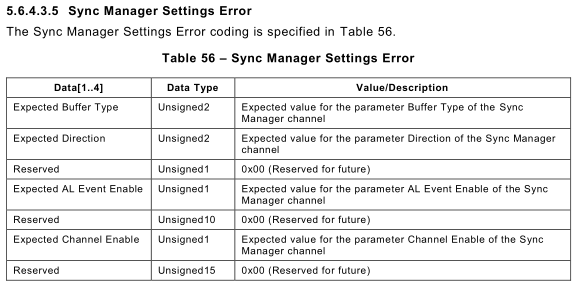So that process produced a much larger ESI file (233KB vs 3KB). I can still see/connect to the gateway with it. It added in an for each of the 128 bytes of Rx and Tx. It also added a large <Dictionary><DataTypes> section with a lot of datatype names and bitsizes. It also added PdoUpload="1" CompleteAccess="0" to the <CoE> tag list near the end of the file (in addition to SdoInfo="1" PdoAssign="0" PdoConfig="0" that was already in the base ESI file). I’ll attach a copy here, you can compare it at greater length to the base ABX_V_3_29.xml yourself. HMS Industrial NetworksESI.xml (232.2 KB)
At any rate, this seems to have worsened my problem. I can see the device, I can tell when it’s turned off, but now I can’t transition from Idle to pre-op, it doesn’t even throw an error, just nothing happens when I hit the transition button.

